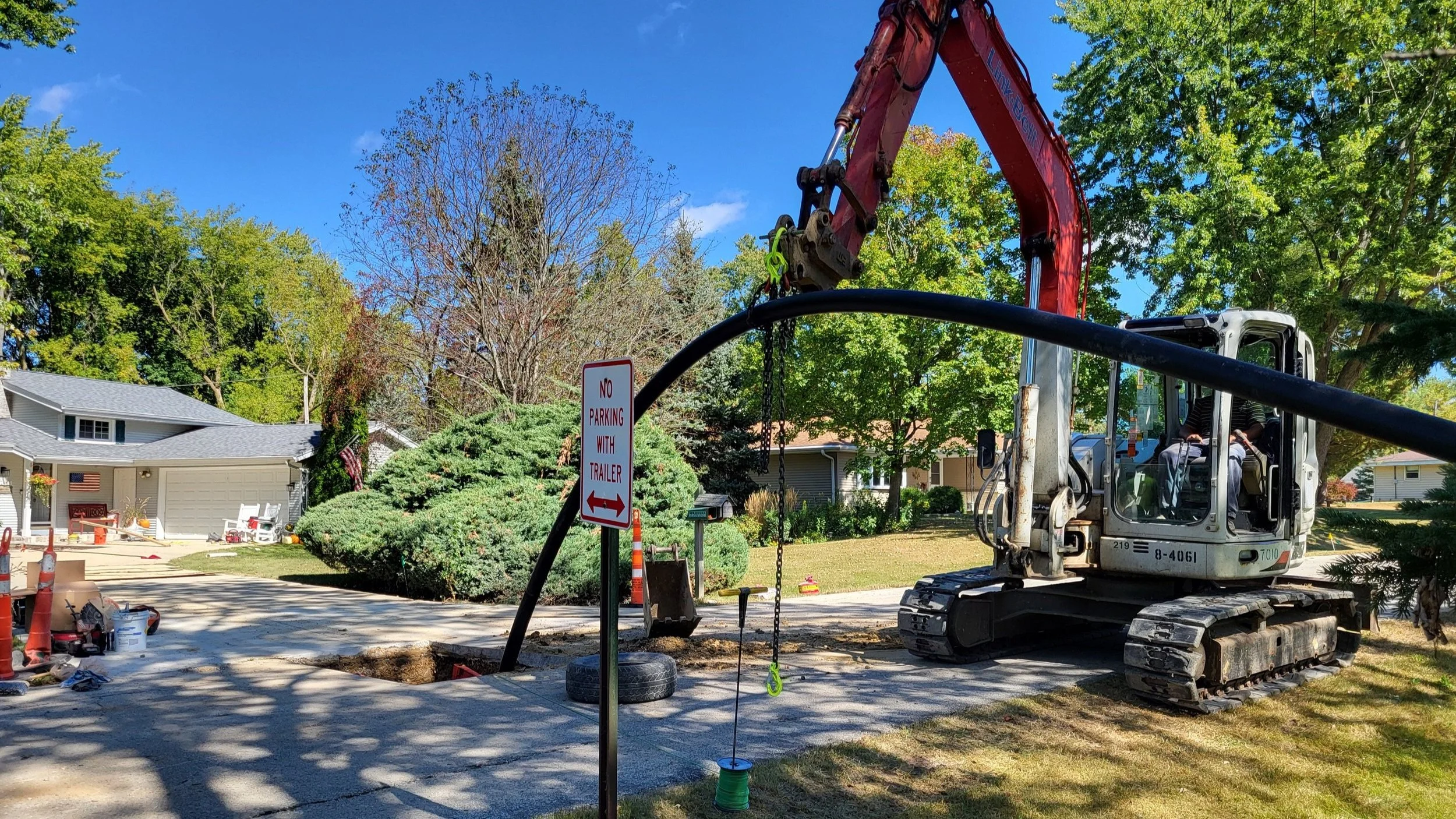Coordinating utility and street construction is already a challenge, especially when trying to minimize disruption for nearby residents and businesses. Fortunately, most work takes place on public property, where no special permissions are required. But when the project crosses onto private property, everything changes—altering the approach, increasing complexity, and directly affecting those who live or work nearby.
Through R/M’s extensive experience with Milwaukee Metropolitan Sewerage District’s (MMSD) Private Property Inflow and Infiltration Reduction program (PPII), interaction practices with property owners have evolved to consistently provide a high level of service and ensure successful projects for all stakeholders. Work under MMSD’s PP/I&I program primarily involves projects that have a high impact of reducing I&I, including sanitary lateral replacement, foundation drain disconnections, and other types of work that may extend to both the interior and exterior of privately owned residences.
With any private property project, it is important to remember that while we are performing necessary work, we are in someone else’s home or yard that they hold dear. As the Engineer or Contractor, you should always take a moment to ask yourself “How would I feel if this were my home?”
Early Engagement
Sanitary lateral replacements under MMSD’s PPII program are voluntary to the property owner, and funded in part or whole by the MMSD in partnership with their member communities. Engaging the homeowners early is extremely important to achieve a high level of participation in the program. The first step is mailing and introductory letter to each property explaining the project and how to participate. A Right-of-Entry agreement (ROE) is included with the letter, giving the property owner the option to sign and return the ROE quickly and easily, giving permission for work to occur at their private property.
Pre-Design Visits
In more recent projects, in lieu of a public information meeting, a “Pre-Design” site visit has been coordinated between R/M and the property owner to meet at the property and discuss the project in detail, offering a personal touch to each homeowner and achieving a comfort level with them. This has proven very successful with almost 100% project participation from the properties had a pre-design site visit.
Identify Responsibilities
As construction time nears, an additional site visit is made with R/M, the Contractor, and the property owner present to communicate and identify responsibilities. The following items are documented on a simple form and signed by the property owner and contractor.
What and where their property will be disturbed
How long the work will take
What to expect the day of construction
What the responsibilities of the Contractor and property owner are
Project SUccess
Personal communication with each property owner and clearly defining expectations early on set the project up for success before the equipment ever hits the ground. Using these communication best practices has proven to minimize negative interactions with property owners and increase participation to a high level.
NEXT STEPS
R/M’s proven approach to private property work prioritizes communication, homeowner trust, and successful project outcomes. Contact an expert today to learn how we can support your next project with strategies that deliver results and build strong community relationships.
About the Author
Mike Blazejovsky
Project Manager
Mike brings extensive experience in managing a broad range of infrastructure projects, including sanitary and stormwater inspection, sewer condition analysis, main and lateral rehabilitation, chemical grouting, and manhole restoration. His background also includes sanitary and storm sewer design, inflow and infiltration studies, cost estimating, and quantity take-offs. In addition to his project management expertise, Mike offers valuable field experience with the hands-on installation of sewer, water, and storm utilities. He also has specialized knowledge in the design, permitting, and installation of Private On-Site Wastewater Treatment Systems (POWTS) in Wisconsin.







